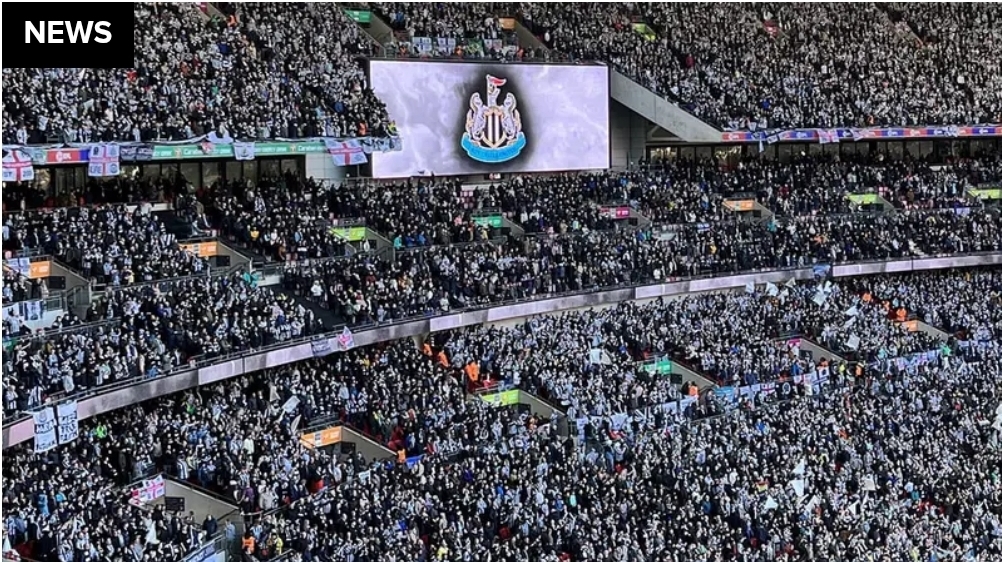Newcastle United has taken the first steps toward modernizing its iconic club crest, announcing plans for a redesign that reflects the club’s growing global stature while honoring its rich heritage.
The decision, revealed through an official club statement on Friday, marks a significant moment in the Magpies’ history as they seek to create a symbol that resonates across digital platforms and physical merchandise with equal impact.
The current crest, beloved by generations of supporters, faces practical challenges in today’s fast-moving digital landscape. Club officials explain that while the existing design carries immense sentimental value, its intricate details often lose clarity when reproduced on modern platforms or smaller screens.
“As our club grows on the global stage,” the announcement reads, “the symbol that represents us needs to keep pace.” This thoughtful approach emphasizes evolution rather than revolution, with the club committing to preserve the crest’s core identity while enhancing its versatility.
Newcastle’s leadership has taken pains to position this as a collaborative process with its passionate fanbase. Season ticket holders and members received direct communications about the changes, accompanied by invitations to participate in an independently conducted survey.

The club’s Fan Advisory Board has already provided preliminary input, recommending a “Refine & Revive” approach that maintains the crest’s fundamental elements while addressing technical limitations.
The consultation process demonstrates Newcastle’s commitment to inclusive decision-making. Fans have until 5pm on Friday, 16th May to submit their initial feedback through Savanta, the independent research firm managing the survey.
For those seeking deeper engagement, the club will host a hybrid consultation workshop on Wednesday, 14th May, offering both in-person attendance at St. James’ Park and virtual participation options.
This transparent approach aims to capture the diverse perspectives that make Newcastle’s supporter culture unique.
Historical context underscores the significance of this change. The current crest, introduced in 1988, has witnessed some of the club’s most memorable moments – from Kevin Keegan’s “Entertainers” era to the recent Saudi-backed resurgence.
Its castle motif and seahorses pay homage to Newcastle’s civic identity, elements likely to remain central to any redesign. The challenge lies in balancing tradition with functionality, ensuring the badge looks equally striking on a smartphone screen as it does emblazoned across the Gallowgate End.
The redesign comes at a pivotal moment in Newcastle’s evolution. As the club establishes itself as regular European competitors and expands its international fanbase, the crest must serve both practical and symbolic purposes.
Modern football demands visual identities that translate seamlessly across digital platforms, merchandise lines, and global broadcasting – requirements that often conflict with traditional heraldic designs.
Following the initial survey, the club plans to present refined options for further fan consultation, creating a rare opportunity for supporters to directly influence a fundamental aspect of their club’s identity.
This phased approach demonstrates an understanding that such changes resonate far beyond commercial considerations – the crest represents personal connections, family traditions, and communal pride for the Toon Army.
While some fans may initially resist change, the club’s emphasis on minimal updates and historical continuity aims to preserve emotional attachments.
The crest remains “on our shirts and inked in our skin,” as the announcement poignantly notes, acknowledging the deep personal connections involved.
By involving supporters throughout the process, Newcastle hopes to create a design that honors its past while serving future generations.
As the consultation period begins, all eyes will be on how the club navigates this sensitive process. The outcome will not only shape Newcastle’s visual identity for years to come but also set a precedent for how football institutions balance tradition with progress in an increasingly digital world.
For a club whose identity is so deeply intertwined with its community, getting this right matters as much as any result on the pitch.

